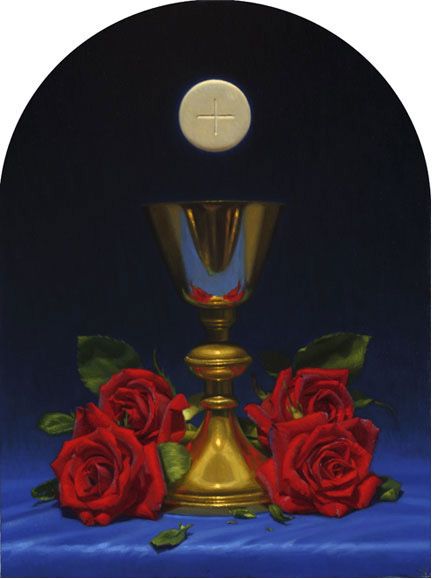Looking at the Church, we see Jesus Christ. Or should, anyway. If we do not see him, then there might be something wrong – with us. Perhaps we have gotten distracted by what some Catholics are getting up to. Perhaps we have gotten distracted by the situation of the Church in Germany or in China. Or perhaps we are just jaded and don’t see spiritual things any more.
It is really good that we spare a thought and a prayer for our brothers and sisters in Germany and China. And perhaps, too, a thought and a prayer for wayward Catholics. They’re in grave peril. But so are we all.
How many of us today realize that we are in a communion of grace and truth – the Church – in order to live with Christ, to live his life. He is the source of the beauty of the Church, and he gives it a real face.
Thanks to the Incarnation, there is a material side to the Church, laity and clergy, sacraments and feast days, practices and institutions.
There is a material, physical side to our belonging to the Church as well. We have to be regularly and physically in a church building, pray with the rest of the faithful there in the pews, participate in the liturgies, and so on. When we do that, then we are conforming our spirits to God by conforming our bodies and our activities, participating in something much larger than ourselves.
Our life with others has its material side too: “If a brother or sister has nothing to wear and has no food for the day, and one of you says to them, ‘Go in peace, keep warm, and eat well,’ but you do not give them the necessities of the body, what good is it?” (James 2:15. 16)
Of course, these activities also speak of the spiritual side of life. As important as they are, our material activities show only the barest hint of the vast spiritual realm in which we live. Our actions are like the skin of a balloon – the outer contours of the great universe of love and meaning.
Our activities are the merest hint of our participation in a grandeur beyond imagination. Gerard Manley Hopkins found the magical words, “masked by these bare shadows,” in speaking of the bread and wine we use for Holy Eucharist.

The Eucharist is the blazing core of the Church. In fact, the Church comes from the Eucharist – “the source and summit” of the Christian life in the words of Vatican II. Here Jesus Christ is guaranteed to be present.
As John Paul II explained of the Church: “In a variety of ways, she joyfully experiences the constant fulfillment of the promise: ‘Lo, I am with you always, to the close of the age’ (Matthew 28:20), but in the Holy Eucharist, through the changing of bread and wine into the body and blood of the Lord, she rejoices in this presence with unique intensity.”
So, the glorious Lord, seated at the right hand of the Father, is present too at every celebration of the Eucharist and in every Tabernacle.
At each Mass, earth is open to Heaven. As the Letter to the Hebrews reminds us, “you have approached Mount Zion and the city of the living God, the heavenly Jerusalem, and countless angels in festal gathering.” (Hebrews 12:22)
In his book on liturgy, Benedict XVI speaks of the “open Heavens,” opened by the death and resurrection of Jesus Christ. The artist Raphael illustrated this concept much earlier in his painting La Disputa (i.e., the debate over transubstantiation). And there, above the Blessed Sacrament on the altar, the heavens are opened, the Divine Father is enthroned above Jesus Christ, and between them and the Blessed Sacrament hovers the Holy Spirit.
It’s a further wonder that “our” Blessed Sacrament, the very one in our neighborhood Church, is also fully the presence of Jesus Christ. Christ is the union of God and the human being. And that union is present in our family Church, always visible for those who care to take the time and really look.
Once upon a time, Mount Zion in Jerusalem was the pole of the earth, the Great King’s city. (Psalm 48:3) But now, the Great King is here among us.
The Great King’s law is “something friendly to our being, something built for our genuine fulfillment and for our authentic freedom.” (Mark Lowery) It is not an inconvenient imposition on our freedoms because our world is not autonomous even if the postmodern, post-Christian, post-reality world imagines that it is. Our world is under the rule of the Great King and he has shared his law with us in his Word.
The law is about life, eternal life, for us. According to Saint Irenaeus: “For the glory of God is a living man; and the life of man consists in beholding God. For if the manifestation of God which is made by means of creation, affords life to all living in the earth, much more does that revelation of the Father which comes through the Word, give life to those who see God.”
And all that, right under our noses.
*Image: Mysterium Tremendum by Neilson Carlin, contemporary [neilsoncarlin.com]














